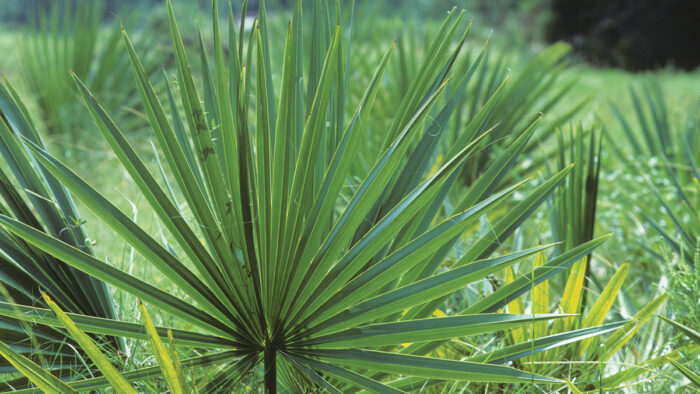
1. Whiteleaf Mountain Mint
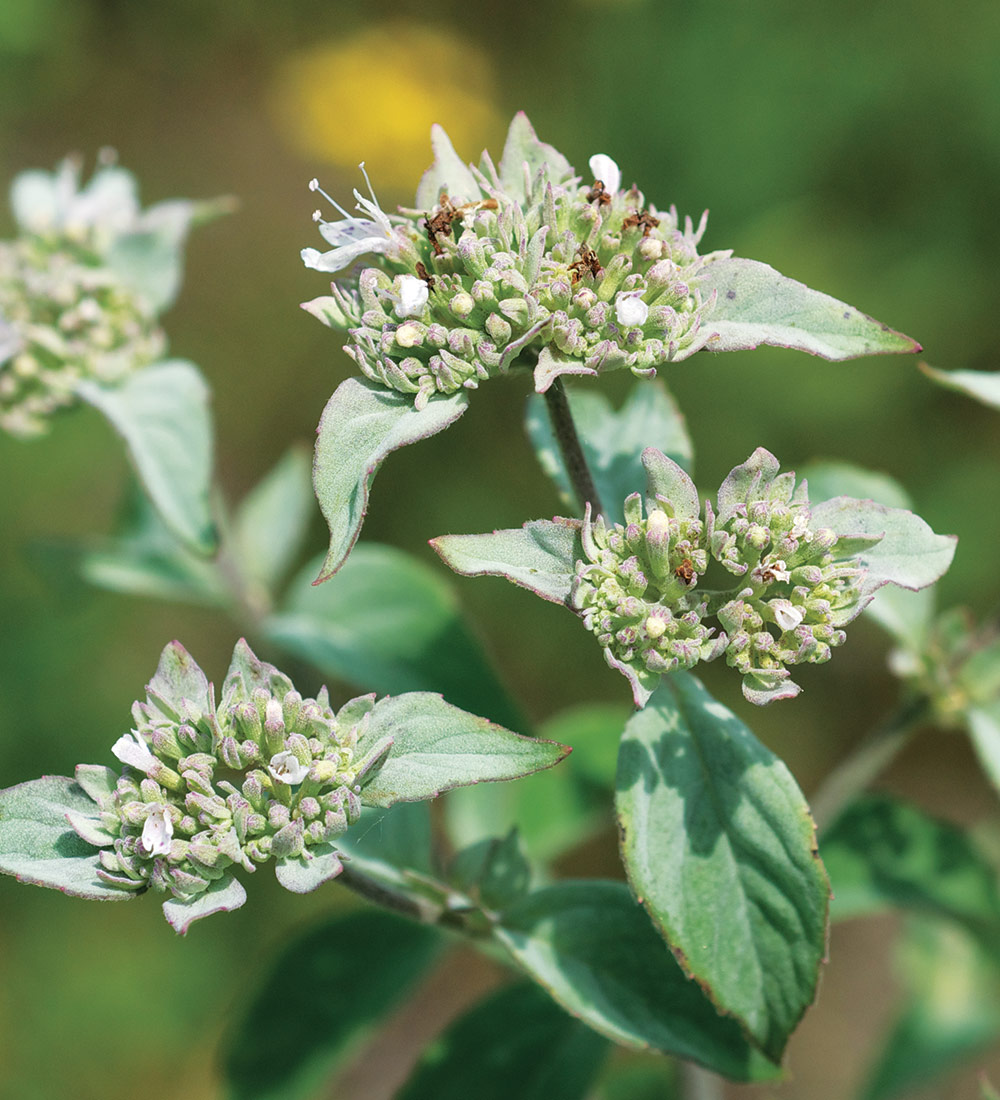
Name: Pycnanthemum albescens
Zones: 7–9
Size: 3 feet tall and wide
Conditions: Full sun to full shade; moist, well-drained soil
Native range: Southeastern United States
In summer, the upper leaves of this native begin to lighten, helping it embody its common name. This plant has small, inconspicuous flowers that are clustered densely together. The upper foliage, found just beneath the blossoms but often confused as part of them, are actually modified leaves called bracts. It’s the mattewhite frosted foliage, however, that is much showier than the blooms. When this mint is planted en masse, the soft, silvery hue becomes quite eye-catching, while the powerful minty smell is hard to miss. Many pollinators visit the flowers, including native bees and butterflies. Whiteleaf mountain mint also attracts insects that prey upon garden pests, adding to the many benefits it brings to the garden.
2. Dwarf Palmetto
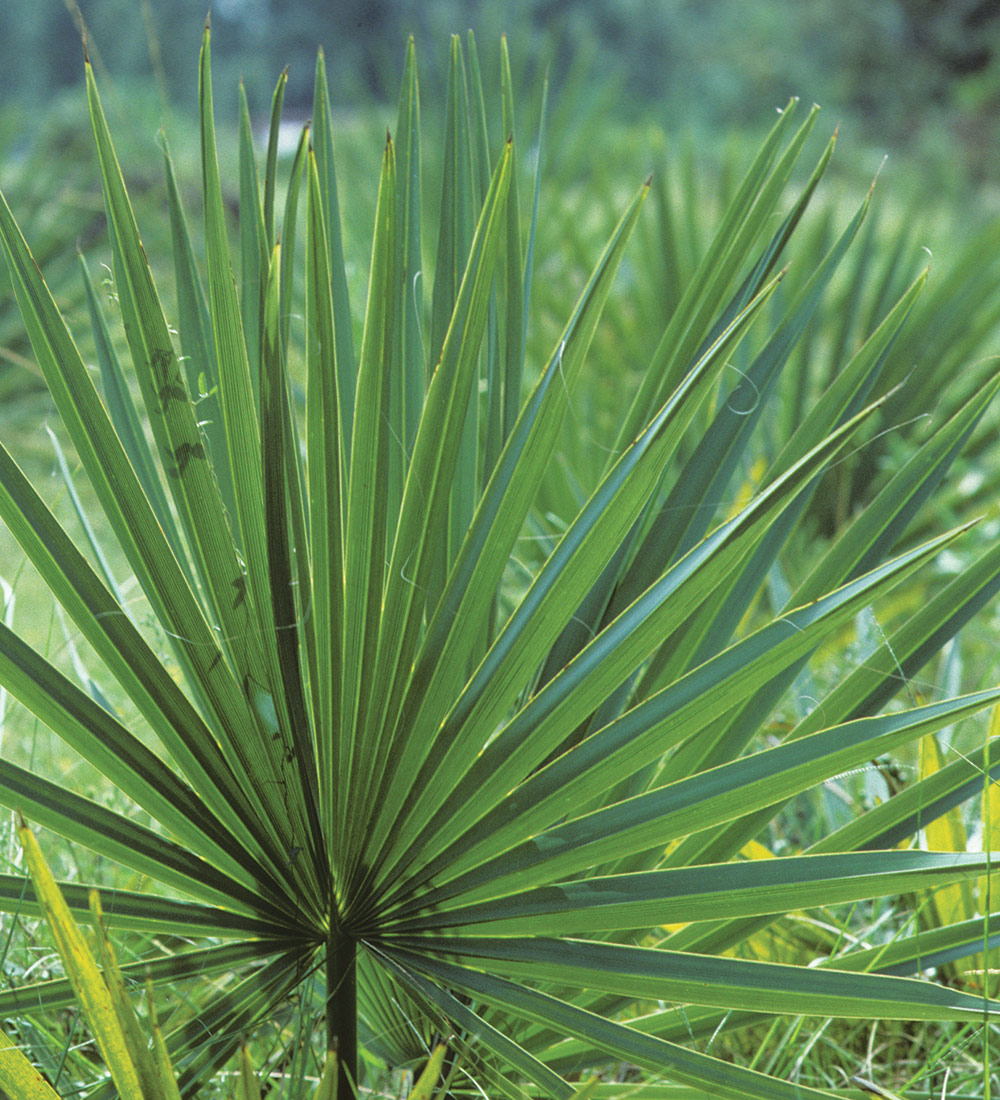
Name: Sabal minor
Zones: 7–11
Size: 5 to 8 feet tall and wide
Conditions: Full sun to full shade; tolerates a wide range of soil types
Native range: Southeastern United States
Dwarf palmetto is a stellar accent plant. The stately evergreen fronds grow in large mounded clumps near to the ground. Each wide, fan-shaped leaf stands out and adds unique texture and a tropical feel to the landscape. In early summer, creamy flowers appear on long stalks that extend beyond the foliage. Following the blooming period, dark fruits form and are enjoyed by many birds. Dwarf palmetto is highly adaptable; it can be sited in full sun to full shade, is cold tolerant, can grow in poorly drained soil, and is easy to care for. It needs ample water during the establishment period but then is quite drought tolerant. Dwarf palmetto looks great in a border or in a large patio pot, and it is quite impressive when planted en masse as well.
3. White Autumn Sage
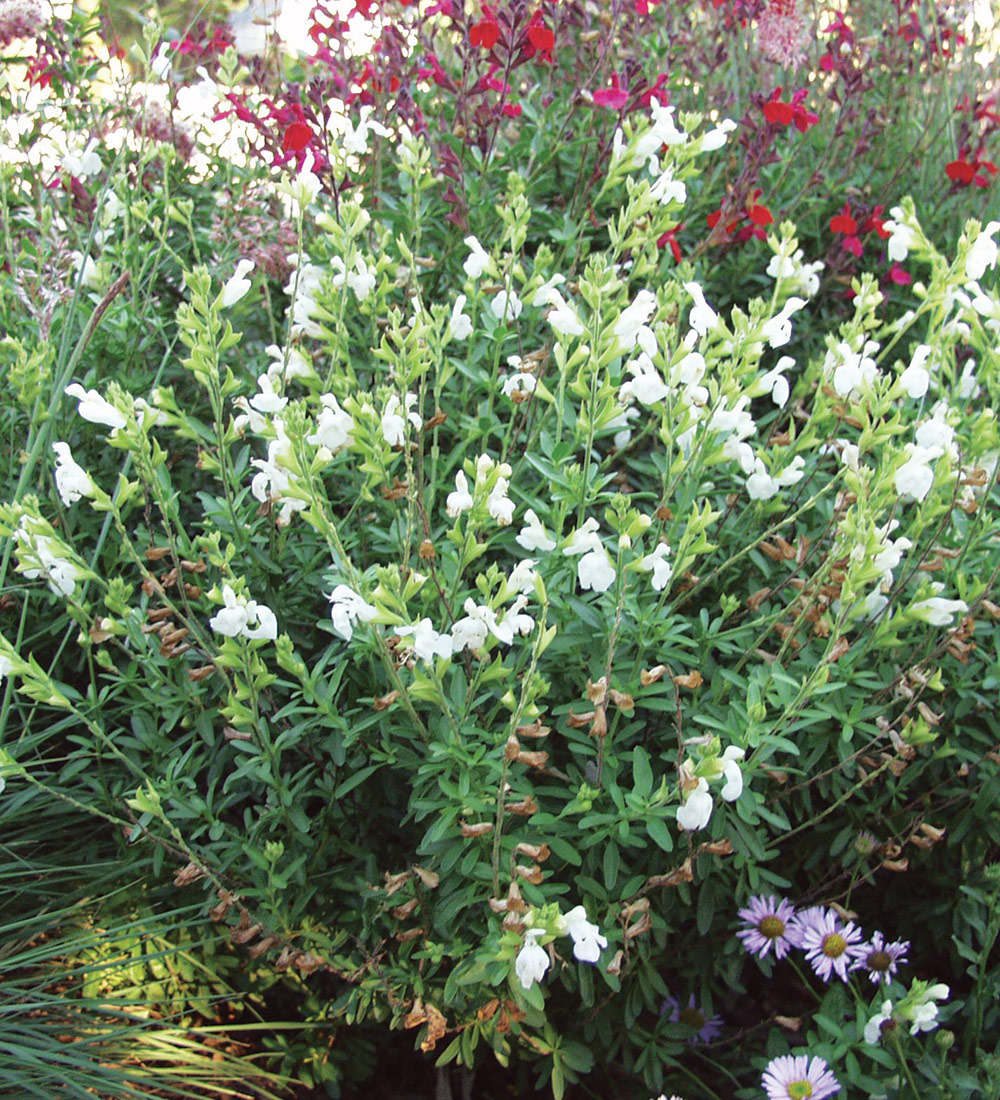
Name: Salvia greggii ‘Alba’
Zones: 6–9
Size: 2 to 3 feet tall and wide
Conditions: Full sun to full shade; well-drained soil
Native range: Texas and south into Mexico
White autumn sage is a popular ornamental subshrub for many reasons. It has a compact size with an upright and rounded growth habit. The long-lasting blossoms attract many pollinators, including hummingbirds, while the lime-green leaves complement the snow-white flowers perfectly. Tubular blooms begin in late spring and last into fall. To encourage more flowering, prune away thick woody stems in late winter, leaving tender new growth intact. A light deadheading throughout the season will further encourage blossoming. Since this is a member of the mint family, it releases a pleasant aroma when pruned or when the leaves are crushed. Although white autumn sage requires well-drained soil to thrive, it is otherwise fuss-free. Once established, it is also highly drought tolerant.
4. Twist-Leaf Yucca
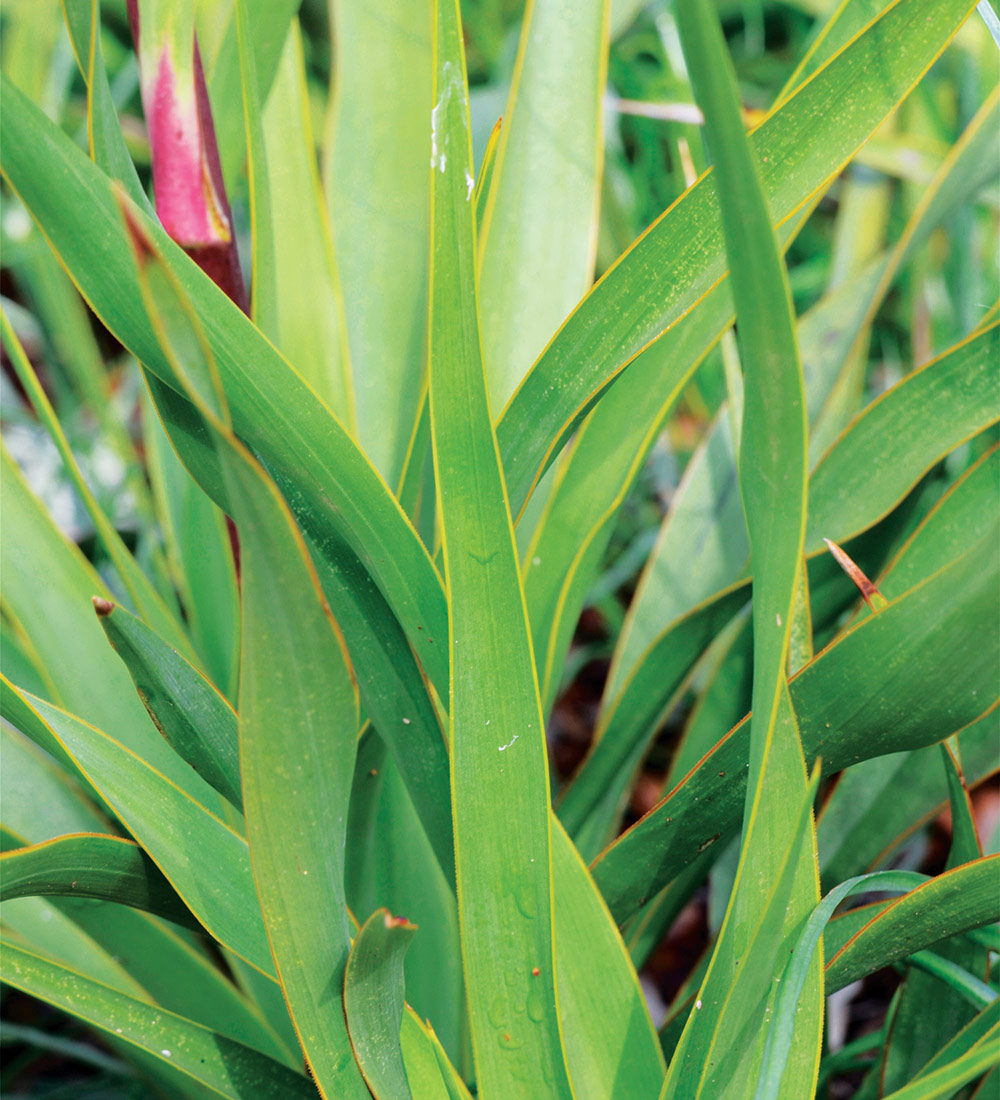
Name: Yucca rupicola
Zones: 7–11
Size: 2 feet tall and wide
Conditions: Full sun to full shade; dry, well-drained soil
Native range: Edwards Plateau region of Texas
This yucca is a wonderful addition to any shady dry area. The young leaves of twist-leaf yucca grow straight and curl gradually as they age. The twisted foliage is an attractive evergreen accent in any season. When in bloom, this plant puts on quite a show. The flower stalk, which can grow up to 6 feet tall, holds large, bell-shaped white blossoms with the delicate soft petals elegantly layered atop one another. They are quite large too, reaching up to 2½ inches long and 1 inch wide. These alluring flowers attract night-pollinating moths as well as butterflies, and twist-leaf yucca serves as the larval host plant to the Kendall’s yucca skipper. This plant is easy to grow: Prune off dead leaves, ensure the base doesn’t get buried, and don’t overwater, as the plant can easily rot.
Amy Galloway is a horticulturist at the Lady Bird Johnson Wildflower Center in Austin, Texas.
Fine Gardening Recommended Products

Planting in a Post-Wild World: Designing Plant Communities for Resilient Landscapes
Fine Gardening receives a commission for items purchased through links on this site, including Amazon Associates and other affiliate advertising programs.

Gardener's Log Book from NYBG
Fine Gardening receives a commission for items purchased through links on this site, including Amazon Associates and other affiliate advertising programs.

ARS Telescoping Long Reach Pruner
Fine Gardening receives a commission for items purchased through links on this site, including Amazon Associates and other affiliate advertising programs.


















Comments
Log in or create an account to post a comment.
Sign up Log in